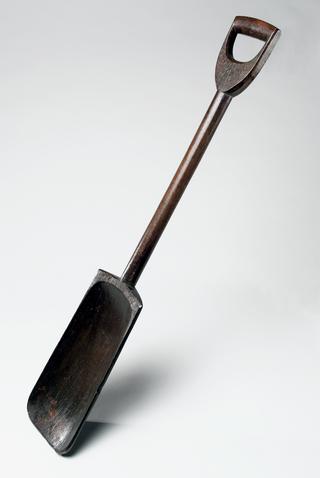
Model of Cambridge's clod crusher
- maker:
- Newton & Son

Model of Cambridge's clod crusher, patented by W. C. Cambridge in 1844
Rollers were made of wood, stone or iron, the early types being made on the far, with whatever materials were available. They were often weighted to increase their pressure on the soil, one method being a box filled with stones positioned on top of the roller framework. Some rollers were solid and some were in two or more parts; mention of a spiky roller was made during the 18th century. The purpose of the roller, and later was the clodcrusher was to break up the large lumps of sun-dried earth and to assist in the preparation of a fine tilth. It was also used to consolidate the soil around newly-sown seed or young shoots.
This efficient design was patented by W. C. Cambridge in 1844. It was based on the use of roller press wheel of different diameters. The toothed ones are slightly larger than the others and fit very loosely on the shaft. The smooth wheels are a normal fit so that adjacent wheels turn on different centres, producing both a grinding and a self-cleaning action. Both this implement and Corsskill's Clodcrusher were effectively used for rolling meadow or grassland infested with wireworm.
Details
- Category:
- Agricultural Engineering
- Object Number:
- 1862-15
- Materials:
- metal (unknown), brass (copper, zinc alloy) and wood (unidentified)
- Measurements:
-
overall: 527 mm x 390 mm x 175 mm, 4.522 kg
- type:
- clod crusher
- credit:
- On loan from Newton & Son




